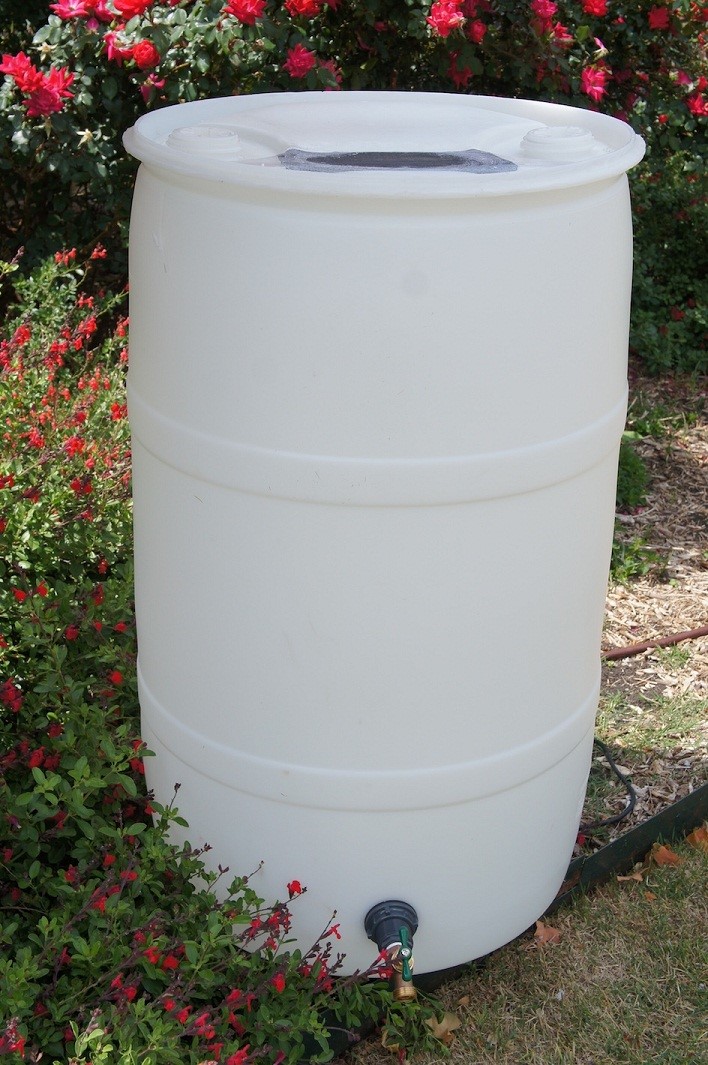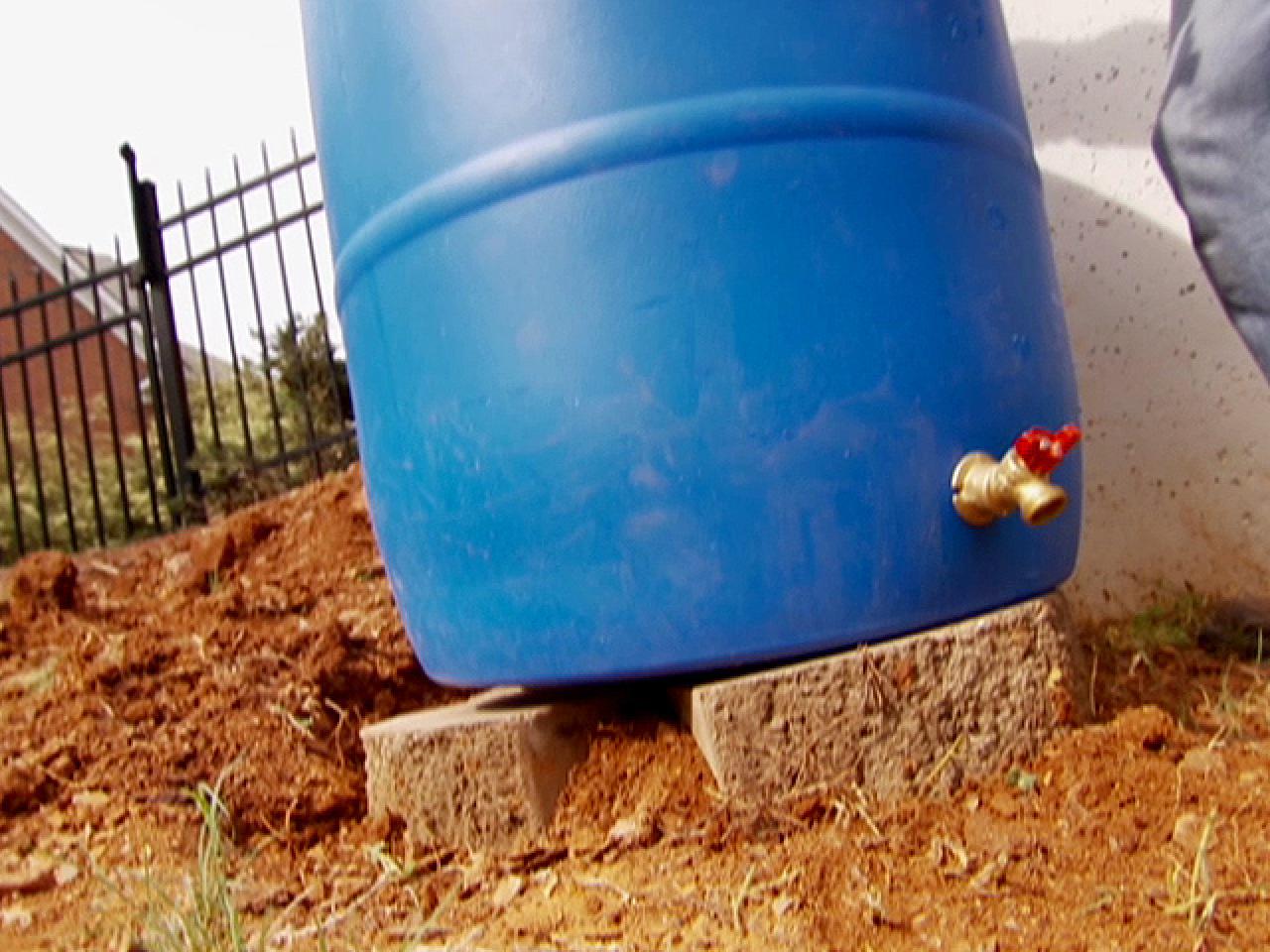
What is a rain barrel?
A rain barrel is a large reservoir fashioned to catch and collect rain water from your gutter so you can use it elsewhere. It’s a super simple concept, but it can make a huge difference when it comes to your summer water expenses. Instead of spending all kinds of money watering your lawn, garden, and plants, you can use rainwater. It’s sustainable, and you’ll get all kinds of good feelings from knowing that you’re contributing to a greener planet. Plus, if having a big plastic barrel in your yard isn’t your idea of aesthetic appeal, there are tons of options for designing your rain barrel — you can even build your landscape to incorporate it as part of your design scheme.

How to build a rain barrel:
There are a few items to take care of before you get started.
First: pick a reservoir. You’ve got lots of choices with it comes to picking a reservoir (the barrel part of your rain barrel) for your rain barrel. Reservoirs are typically heavy-duty, food grade plastic drums. You can buy a new one (search for a 55 gallon, open-head plastic drum with a cover). These will usually run $40-$60. Another option is to use a heavy-duty, outdoor garbage can. A garbage can is large and durable enough to serve all your purpose, and they’re a little more affordable at $30-$40.
If you’re looking for an even better deal, check in with local your local car wash or other similar establishment –– they often buy cleaning liquids in large drums, so you might be able to score a free reservoir container.

A few tips when picking a reservoir:
- Make sure there are no harmful chemicals still left in the container. A container with lingering chemicals could pollute the area around the rain barrel or any plants you water, and the chemicals could potentially leech into the water table, posing a health risk for you and your family.
- Pick a barrel that is opaque in color — water in a clear container can heat up too much.
- Make sure the container is made of a sun-resistant material. Your barrel will be sitting in the sun most of the time, so you’ll want to make sure the plastic doesn’t break down as a result.
- Be sure the lid of your barrel fits tightly to avoid the possibility of debris or small animals making their way into the barrel.
Then: Take a trip to the hardware store.
After you’ve got the perfect reservoir, you’ll need to head to the hardware store to pick up a few items.
Here’s a handy list you can use in order to avoid multiple store runs:
- 2 rubber washers
- 2 metal washers
- 1 hose clamp
- 1 spigot
- A drill
- Silicone caulk
- Landscaping mesh
Now that you’ve got your gear, you’re ready to get started.
Step 1: Drill a hole for the spigot, about 3-4” from the bottom of the barrel. For a snug fit, make sure the diameter of the hole is slightly smaller than the diameter of your spigot.
Step 2: Put one metal washer on the threaded end of the spigot. Add a snug-fitting rubber washer over the threads to keep the metal washer in place.
Step 3: Apply a bead of silicone caulk to the metal and rubber washers and fit the faucet into the hole in your rain barrel.

Step 4: When the sealant is dry, place the second washer on the threads of the spigot on the inside of the barrel, then place the second rubber washer on the threaded spigot.
Step 5: Fasten the hose clamp to the spigot on the inside of your barrel. This will keep the spigot in place, so make sure to apply the clamp snuggly.
Step 6: Cut a hole in the lid of your barrel wide enough to accommodate the water flow from your gutter downspout.
Step 7: Drill a couple holes on the side of your barrel, near the top. These are for overflow, so you can avoid major flooding from your barrel in case of a heavy rain.
Pro-tip: If you live in a really rainy area, consider adding a second barrel. Just affix a short length of hose or PVC piping to the overflow port of the first barrel, then connect it to a similar port on the second barrel.
Step 8: Fit a piece of landscaping mesh over the top of the barrel, then put the lid on top of the barrel to secure the mesh in place. This will prevent leaves, bugs, and other small critters from falling into your barrel.

Step 9: Install your barrel in its intended location. Make sure the barrel is placed directly below the gutter downspout in order to catch rainwater.
Pro-tip: Build a platform for your rain barrel. The extra height will add water pressure, and a using a platform can add stability during heavy rains when the ground is soggier than normal.
Step 10: Enjoy your new rain barrel! You’ll feel great about all the money you save on expensive water bills, and you’ll be proud of your new, super-green watering system.

Recent Comments